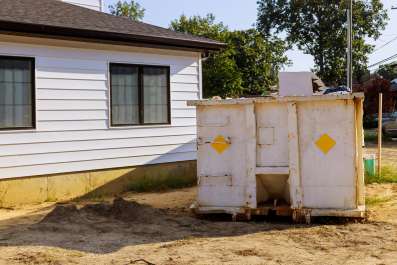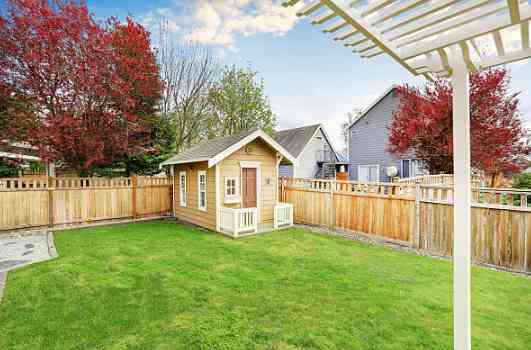How to Plan for Bathroom Demolition Effectively
September 10, 2025
Tips for Concrete Removal in Busy Neighborhoods
September 10, 2025What to Do with Your Old Shed After Demolition
Tearing down an old shed may feel like the end of an era, but it’s really just the beginning of deciding what to do next with all that leftover material. Demolition rarely leaves behind a neat pile of wood or metal; instead, you’re often staring at a jumble of nails, panels, roofing, and debris that takes up more space than you imagined. For many homeowners, the challenge isn’t taking the structure down—it’s figuring out the most practical, responsible, and even creative way to deal with the remains. Whether your shed was made of wood, metal, or mixed materials, you’ve got plenty of options for managing the aftermath. From repurposing and recycling to hauling it away with professional services, knowing your choices can help you transform a pile of rubble into something useful or at least dispose of it efficiently without creating unnecessary stress.
Repurposing shed wood for new projects
When a wooden shed comes down, it often leaves behind usable lumber that shouldn’t immediately be viewed as waste. With a little imagination, these boards can find a second life in garden projects, shelving, or even outdoor seating. Repurposing the wood not only saves money but also brings a personal touch to your home improvement efforts. Salvaged wood often has a rustic appeal that can’t be replicated with store-bought lumber, giving any new project a unique character.
The key is sorting through the pile carefully, removing nails and trimming damaged ends before reuse. Even pieces that seem too rough may be cut down for smaller tasks like birdhouses, planter boxes, or compost bin frames. Repurposing materials not only reduces landfill waste but also transforms demolition debris into something functional and rewarding.
Recycling metal components responsibly
Metal sheds, or those with metal roofing and siding, provide another opportunity for reuse. Scrap metal can be taken to recycling facilities where it is melted down and repurposed into new products. Recycling metal is both environmentally responsible and often financially beneficial, as many facilities will pay for scrap depending on weight and type. Aluminum, steel, and copper components can add up to a decent return if handled properly.
Before hauling metal off, it’s wise to separate it from other materials like wood or plastic to streamline the recycling process. Cleaning off dirt or removing fasteners makes it more appealing to recyclers and may even increase its value. Recycling prevents useful material from sitting in a landfill and supports industries that rely on reclaimed metal. By handling shed demolition debris responsibly, homeowners contribute to sustainability while making the most of what might otherwise seem like junk.

Donating materials to local organizations
Not every piece of shed debris belongs in the trash. Many community organizations accept usable building materials, which can be redistributed for projects that benefit others. Charities, schools, or neighborhood groups may be eager to receive lumber, panels, or even hardware that can still serve a purpose. Donating these materials is a great way to support local initiatives while keeping waste out of landfills.
Before donating, homeowners should sort the materials and ensure they’re safe for reuse. Contacting organizations in advance helps determine what they will accept, as some may have restrictions on certain items. The act of giving extends the life of demolition remnants and contributes to community improvement projects. What was once an old shed in your backyard could become part of a new bench, playground feature, or storage solution elsewhere, making donation an option that’s both meaningful and practical.
Hiring professionals for shed debris hauling
Sometimes the sheer volume of shed debris is overwhelming, and attempting to haul it on your own can be time-consuming and exhausting. This is where professional hauling services step in, offering efficient removal and proper disposal. Professionals not only have the equipment to handle large loads but also the knowledge to separate recyclables from true waste. Their expertise ensures that shed materials are managed responsibly, saving homeowners hours of labor.
Hiring professionals also eliminates the need to rent trucks or make multiple trips to disposal facilities. The convenience of having a team manage everything allows homeowners to focus on their next project rather than stressing about debris. It’s a solution that balances efficiency and peace of mind, particularly when dealing with heavy or hazardous components.
Creating garden mulch from wood debris
Wood debris left over from a demolished shed doesn’t always need to be hauled away. In fact, smaller scraps can be transformed into mulch for landscaping or gardening. Chipped wood pieces can cover soil, helping retain moisture and reduce weed growth, while also creating a polished look for flower beds and pathways. Turning shed remnants into mulch not only reduces waste but also enhances the appearance and health of your yard.
Before using the wood, ensure it hasn’t been treated with chemicals, as treated lumber can leach harmful substances into the soil. Clean, untreated wood is safe to process into mulch and provides a practical solution for repurposing shed scraps. Investing in or renting a wood chipper makes the process straightforward.
Repurposing shed doors and windows
Old shed doors and windows are often overlooked during demolition, yet they can serve as valuable elements in new projects. Doors can be reused as rustic tabletops, headboards, or even garden gates, while windows can become charming greenhouse panels or decorative wall art. Repurposing these components saves money and gives a unique character to future DIY creations.
Instead of discarding them with the rest of the debris, homeowners should set these parts aside and explore creative ways to integrate them into the home or garden. Even if they’re worn or damaged, sanding, painting, or minor repairs can give them a second life. Repurposing doors and windows allows the character of the old shed to live on, offering both sentimental value and practical reuse. It’s a sustainable choice that adds flair to projects while reducing unnecessary waste.
Upcycling shed roofing for outdoor projects
Roofing materials from a shed, whether shingles or corrugated metal, can be adapted for a range of outdoor uses. Corrugated panels, for instance, can be repurposed into fencing, raised garden bed walls, or even small awning structures. Shingles may not have as many direct reuse options, but they can sometimes be incorporated into craft projects or used for patching outdoor surfaces.
When handling roofing material, safety is essential. Sharp edges or nails should be addressed before reuse to prevent injuries. With a little creativity, homeowners can turn roofing scraps into something functional that blends seamlessly into their property. Upcycling shed roofing avoids the need for immediate disposal and provides a sense of accomplishment. Rather than viewing roofing as waste, consider it a versatile building resource waiting for a second chance.
Clearing hazardous materials safely
Sheds often house more than just garden tools—they can contain hazardous materials like old paint, chemicals, or treated wood. After demolition, these substances shouldn’t simply be tossed into the trash. Hazardous waste requires special handling to avoid contaminating the environment or creating health risks. Many municipalities provide designated drop-off locations where chemicals, treated lumber, and other hazardous items can be disposed of safely.
Sorting out hazardous materials early in the cleanup process makes the entire project safer and more efficient. It also prevents potentially dangerous substances from being mixed in with recyclable or reusable materials. Handling these items responsibly ensures compliance with local regulations and protects the surrounding community. By addressing hazardous waste carefully, homeowners take an important step toward completing their shed demolition with environmental awareness and safety in mind.
Preparing the space for new projects
Once the shed debris has been managed, attention naturally turns to what comes next for the cleared space. Homeowners might choose to install a new shed, expand a garden, or create a patio area. Preparing the ground properly ensures that the new project starts off strong. This could involve leveling the soil, removing leftover debris, or laying a foundation for future structures.
Repurposing the space allows homeowners to reimagine their property and tailor it to their current needs. What was once occupied by a dilapidated shed can now become a functional or enjoyable feature of the yard. Proper preparation ensures that the new use of the space doesn’t inherit problems from the old structure. Transforming the cleared area into something fresh turns the challenge of demolition into an opportunity for growth and creativity.
Storing salvageable items for later use
Not every material needs to be reused immediately after demolition. Storing salvageable items such as lumber, panels, or hardware for later projects is a practical option. Keeping these materials organized and protected from the elements ensures they remain in good condition until needed. A dry storage area, such as a garage or basement, can preserve wood and metal for months or even years.
By storing materials, homeowners give themselves flexibility for future DIY endeavors without having to buy new supplies. Even simple items like hinges, brackets, or screws can prove useful down the line. This method also buys time for brainstorming creative reuse ideas without feeling rushed. Salvaging and storing items keeps demolition materials out of landfills and creates a reserve of resources that can spark inspiration later.
Conclusion
When an old shed comes down, what remains doesn’t have to be viewed as a problem. From recycling metal and repurposing wood to creating mulch or storing salvageable items, there are countless ways to handle shed debris responsibly and creatively. Whether materials are donated, upcycled, or hauled away professionally, every option carries value if approached thoughtfully. The real opportunity lies in seeing demolition not as the end but as a chance to begin something new with what’s left behind.
For homeowners in Santa Rosa, CA, North Bay Junk Removal offers dependable junk removal services to handle shed debris quickly and efficiently. Their team ensures materials are sorted, hauled, and disposed of responsibly, making cleanup seamless for residents. By relying on their expertise, homeowners can clear their property without stress while focusing on future projects. Call 707-478-6817 today to schedule professional junk removal services with North Bay Junk Removal and take the next step after shed demolition.




